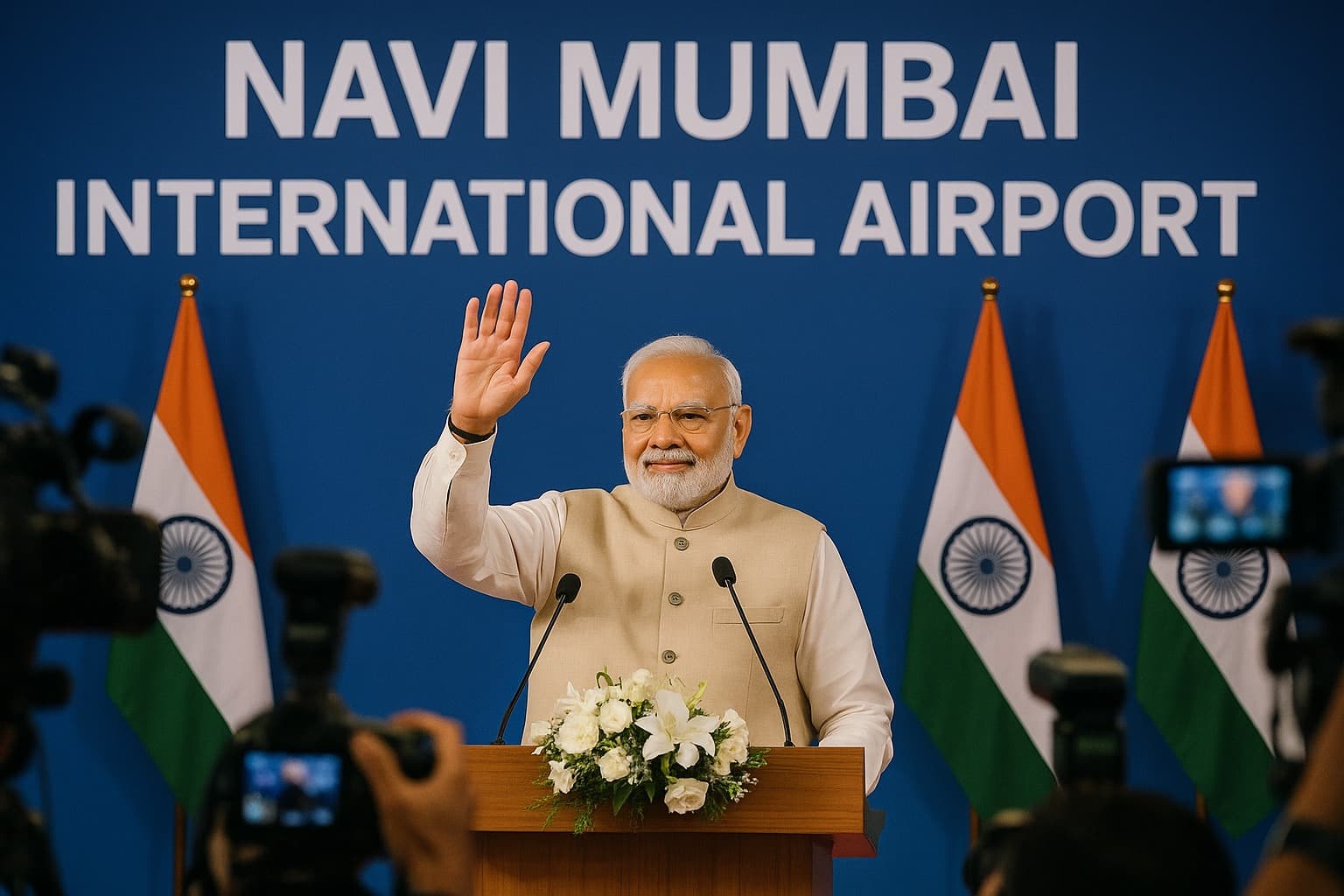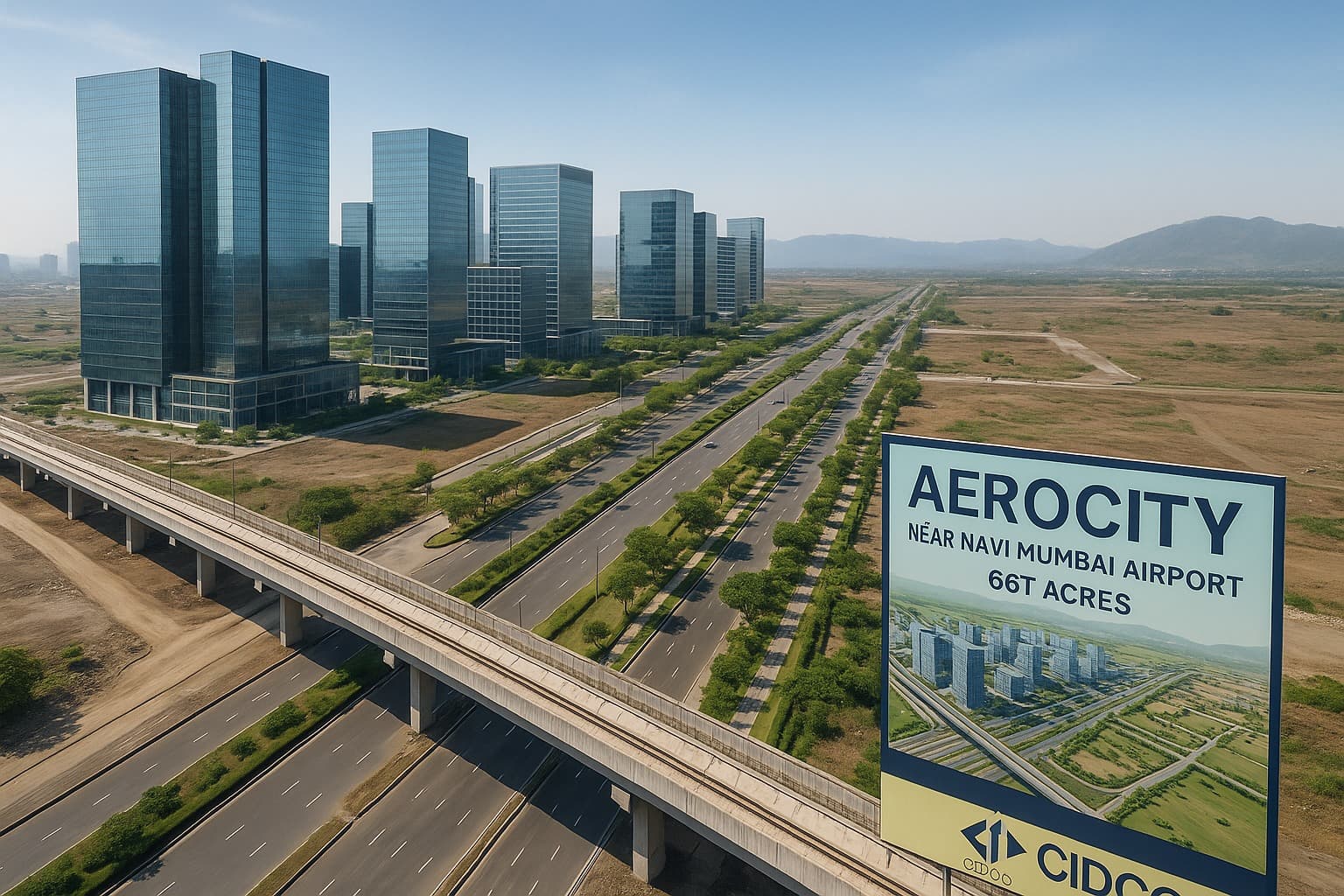PM Modi Inaugurates Navi Mumbai Airport: Aerocity Plan & Real Estate Impact
Summary
PM Modi inaugurated Navi Mumbai Airport, spurring CIDCO's Aerocity. This boosts connectivity, jobs, and real estate. Invest early for prime property appreciation in a modern urban hub!

Mumbai is buzzing with excitement today. After years of planning, delays, and anticipation, Prime Minister Narendra Modi is set to inaugurate the Navi Mumbai International Airport (NMIA). But that’s not all—CIDCO is simultaneously fast-tracking its ambitious 667-acre Aerocity project, set to transform the areas around the airport into a thriving hub of business, leisure, and residential opportunities.
This is more than a ceremonial event. For homebuyers, investors, and businesses, today’s developments could reshape Navi Mumbai’s skyline, real estate market, and lifestyle opportunities. Let’s break down what this inauguration and Aerocity plan mean, and why it matters to anyone interested in the city’s future.
1. Navi Mumbai Airport: A Game-Changer for Connectivity
The Navi Mumbai International Airport is the culmination of decades of planning, aiming to relieve congestion from Mumbai’s existing airport while providing a world-class gateway for domestic and international travelers.
Here’s why it’s a game-changer:
Capacity & Facilities: NMIA is designed to handle over 60 million passengers annually in its first phase, with state-of-the-art terminals, cargo facilities, and modern passenger amenities.
Economic Boost: The airport isn’t just about travel—it’s about jobs, tourism, and business opportunities. Thousands of direct and indirect jobs are expected to emerge from airport operations, hotels, logistics, and allied services.
Strategic Location: Nestled in Navi Mumbai, the airport connects seamlessly to major highways and proposed metro corridors, making travel easier for residents, employees, and tourists alike.
For real estate, airports are known catalysts. Areas near major airports often see property prices surge, commercial developments accelerate, and infrastructure projects follow. Navi Mumbai is poised for exactly this kind of transformation.
2. CIDCO’s 667-Acre Aerocity: More Than Just Offices
While the airport grabs headlines, CIDCO’s 667-acre Aerocity project promises to redefine urban planning in the region. Think of it as a self-sustaining township designed to integrate business, living, and leisure seamlessly.
Here’s what makes Aerocity special:

Mixed-Use Development: From office spaces to luxury hotels, retail outlets to residential complexes, Aerocity is designed to cater to every modern urban need.
Connectivity: Being adjacent to the airport and major transport corridors, Aerocity ensures quick access for professionals, residents, and visitors.
Modern Infrastructure: With smart roads, utilities, digital connectivity, and green spaces, Aerocity aims to be a model for 21st-century urban planning.
For investors and buyers, Aerocity offers long-term value potential. Early movers can benefit from property appreciation as the area develops into a high-demand urban hub.
3. The Ripple Effect on Real Estate
Infrastructure projects like airports and urban townships have a direct impact on nearby property markets. Navi Mumbai is no exception.
Residential Demand: Homes near the airport and Aerocity are already seeing increased inquiries. Families and professionals are attracted by the convenience, connectivity, and lifestyle upgrades.
Commercial Potential: Offices, coworking spaces, hotels, and retail outlets are likely to see heightened demand, creating opportunities for investors looking for rental income or commercial returns.
Price Appreciation: History shows that areas near major infrastructure projects often witness rapid price appreciation. Early investment can lead to significant capital gains as development matures.
Simply put, the airport and Aerocity aren’t just urban upgrades—they are economic engines for the region.
4. Why Connectivity and Infrastructure Matter
One of the biggest reasons today’s inauguration is crucial is connectivity. Both the airport and Aerocity are planned with seamless transport in mind:
Highways & Roads: Quick access to Mumbai-Pune Expressway, Thane-Belapur Road, and other major routes.
Public Transport: Planned metro lines and bus networks connect residents, office employees, and travelers efficiently.
Accessibility: Smooth commuting ensures that both businesses and residents can enjoy time efficiency, convenience, and reduced travel stress.
For businesses, easy connectivity improves operational efficiency and helps attract talent. For residents, it enhances lifestyle by reducing commute times and integrating essential services within reach.
5. Opportunities for Homebuyers and Investors
If you’re considering property near the Navi Mumbai Airport, here’s why this is an exciting moment:
Strategic Growth: The airport acts as a magnet for commercial and residential development, increasing demand for property in the vicinity.
Aerocity Advantage: The 667-acre Aerocity isn’t just a commercial zone—it’s a planned, mixed-use ecosystem, offering lifestyle, business, and investment potential in one place.
Early Investment Perks: Buyers who invest before full operationalization of the airport are likely to benefit from long-term appreciation.

Job Creation: Thousands of jobs in hospitality, logistics, retail, and aviation are expected, increasing demand for rental properties and supporting local economies.
Government Support: With the Prime Minister inaugurating the airport and CIDCO actively pushing development, there’s strong policy backing, reducing risk for investors and buyers.
Simply put, the airport and Aerocity together create a perfect storm of opportunity—connectivity, infrastructure, jobs, and lifestyle amenities, all boosting real estate potential.
6. Lifestyle Transformation
Beyond economics, these developments will also change how people live and work in Navi Mumbai:
Modern Living Spaces: New residential projects near Aerocity are likely to include amenities like gyms, parks, and community centers.
Retail & Entertainment: Shopping centers, restaurants, and entertainment zones will make the area more vibrant and livable.
Green & Smart Planning: CIDCO’s emphasis on smart infrastructure and green spaces ensures a sustainable urban environment, attractive for long-term residents.
In essence, people aren’t just investing in property—they’re investing in a new way of living, combining convenience, modern amenities, and quality of life.
Conclusion
Today’s inauguration of the Navi Mumbai International Airport by PM Modi, coupled with the acceleration of CIDCO’s 667-acre Aerocity, marks a transformative moment for Navi Mumbai. The airport promises world-class connectivity and economic growth, while Aerocity is poised to become a thriving urban hub.
For homebuyers, this is a chance to invest in future-ready properties. For investors, commercial and residential spaces near the airport offer long-term appreciation and rental opportunities. And for businesses, this development ensures ease of operations, connectivity, and a professional environment.
Ultimately, this is not just about an airport or a township—it’s about reshaping Navi Mumbai into a modern, connected, and vibrant city, ready to meet the needs of India’s next generation of urban residents, professionals, and entrepreneurs.
Summary (100 words)
PM Modi’s inauguration of the Navi Mumbai International Airport and CIDCO’s 667-acre Aerocity project marks a pivotal moment for Navi Mumbai. The airport is set to boost connectivity, create jobs, and support economic growth, while Aerocity will transform the surrounding area into a mixed-use urban hub integrating offices, hotels, retail, and residences. Real estate near the airport is expected to see increased demand and price appreciation, offering opportunities for homebuyers and investors alike. With strategic location, infrastructure, and government support, these developments signal a new era for Navi Mumbai, making it a prime focus for property investment and urban lifestyle upgrades in 2025.
